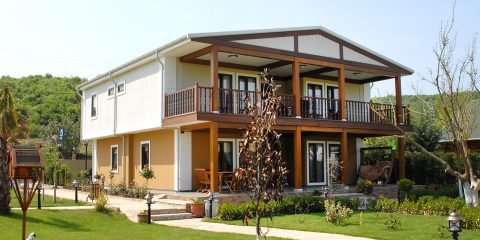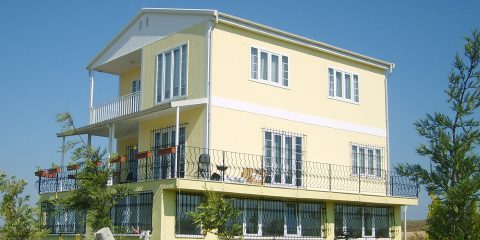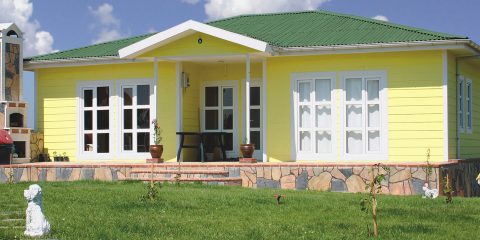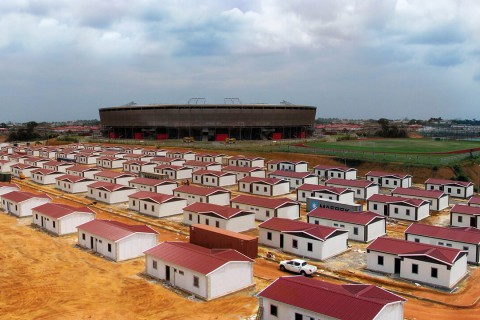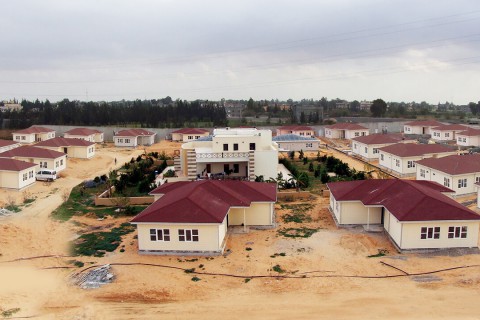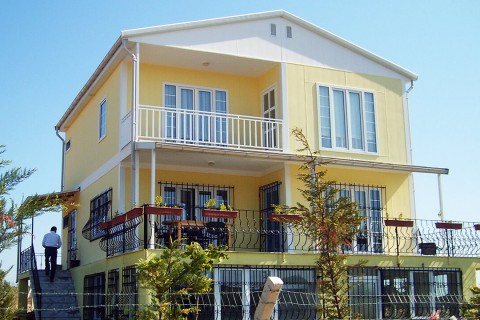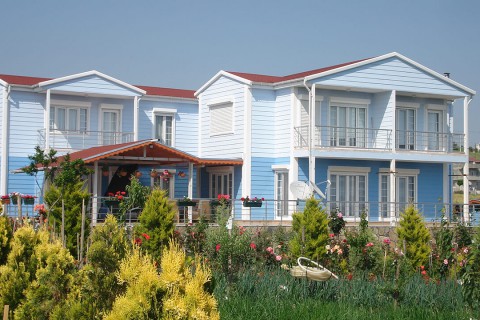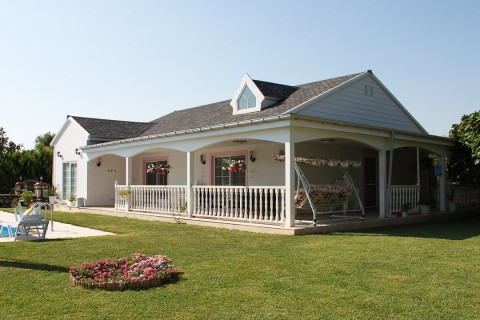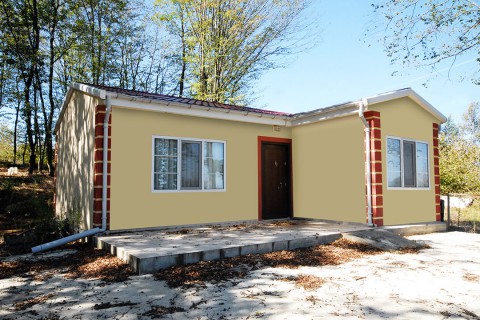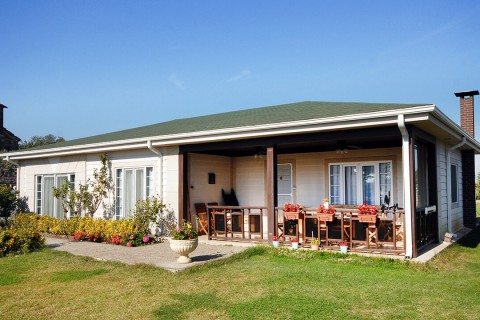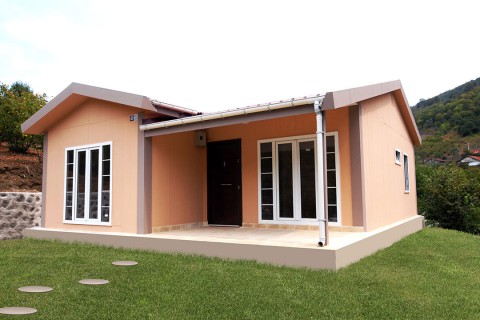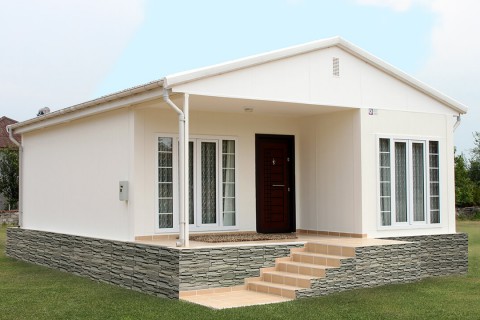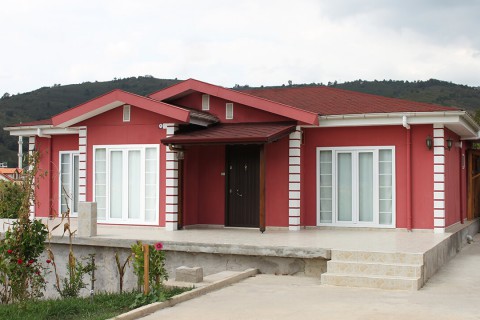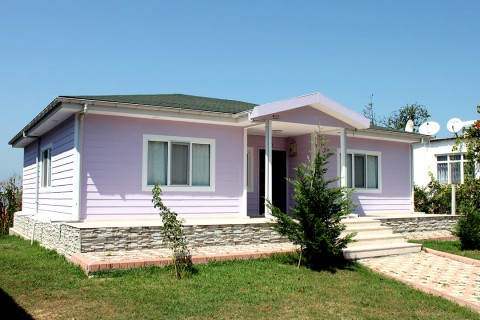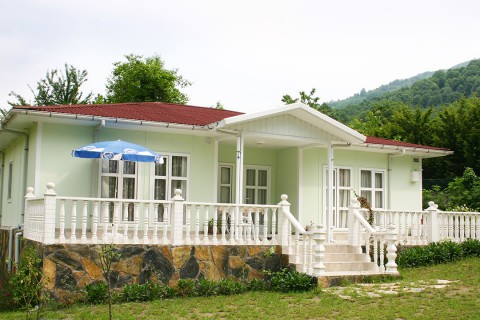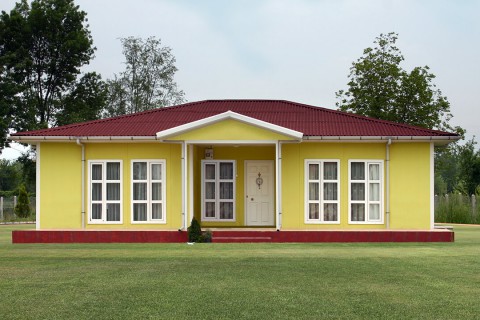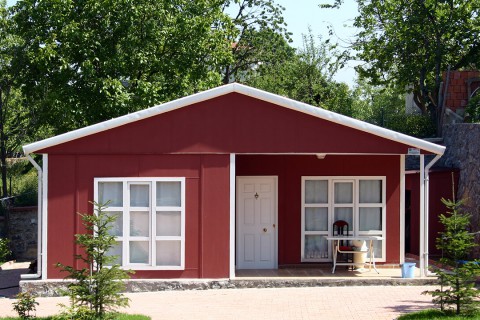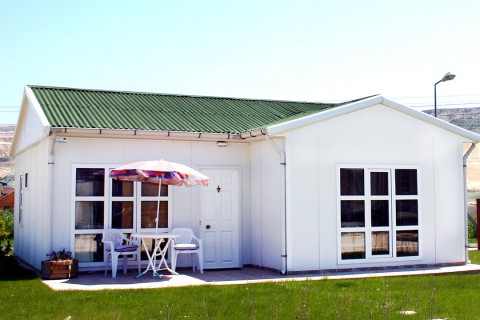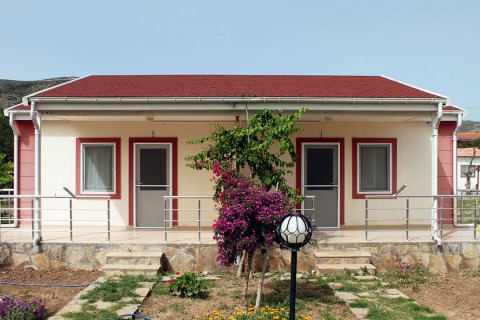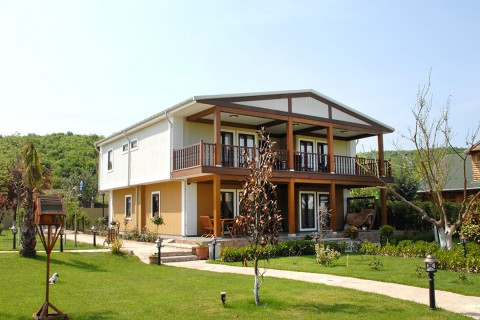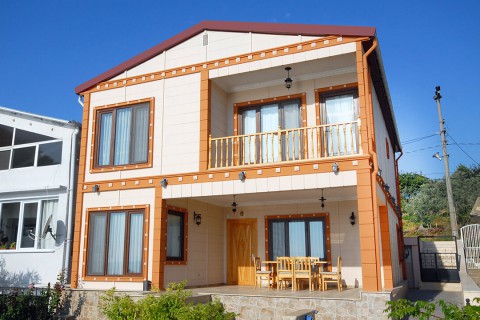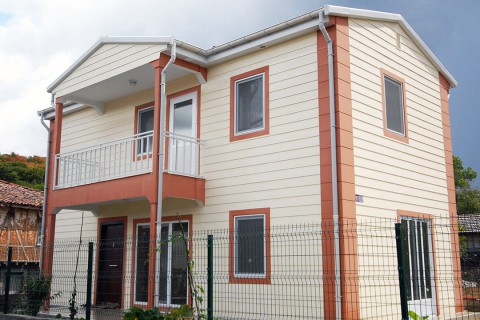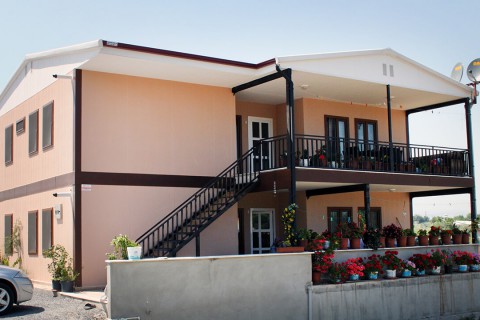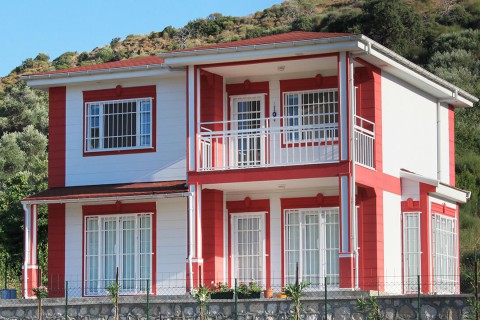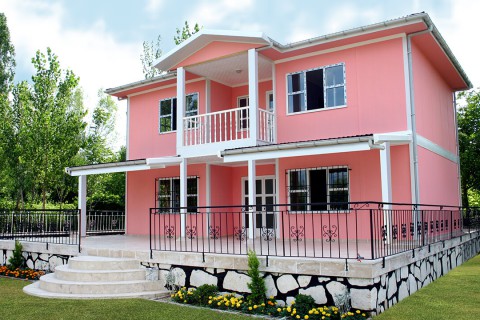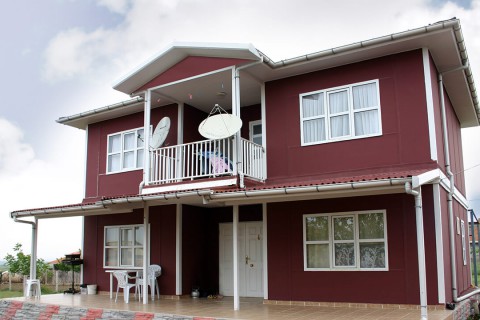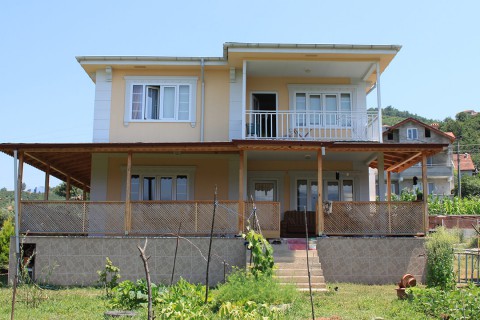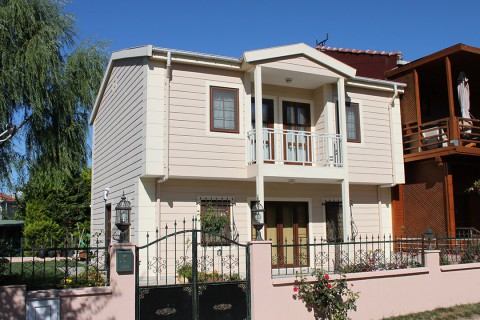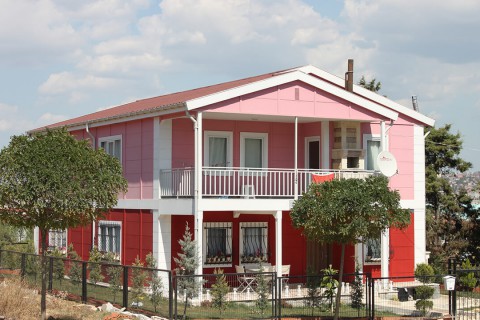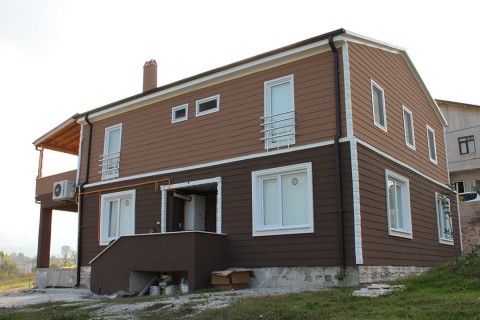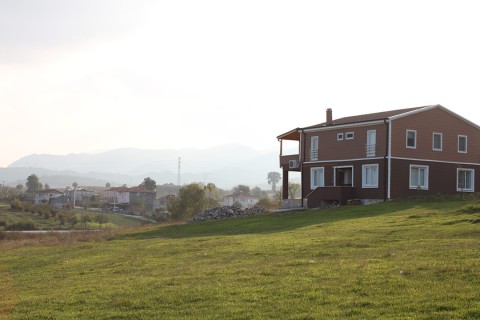Prefabricated House - Product Groups
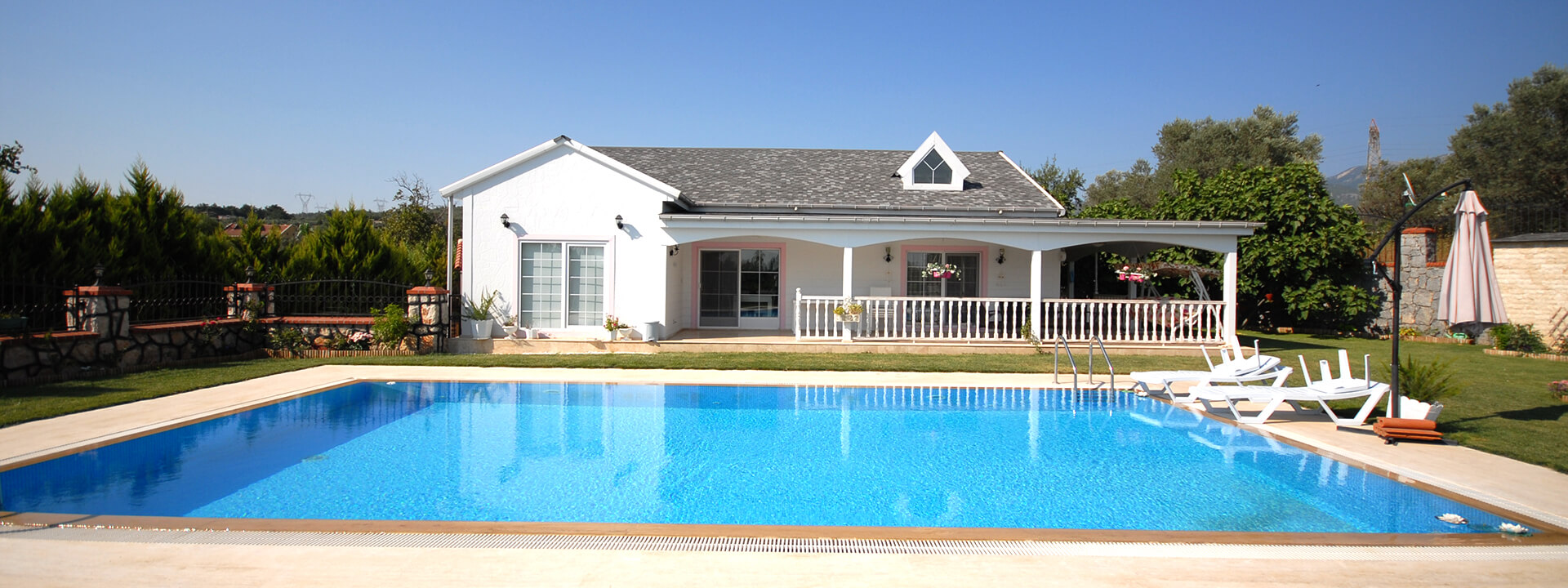
Prefabricated House Solutions
Prefabricated houses are not only a home but also a contemporary, technological and healthy life style. Our prefabricated houses produced with cutting edge technology are preferred based on such facts that they are affordable and have long service life and low maintenance cost. We are employing A1 class fireproof, water-resistant Hekim Board brand fibercement products together with high density galvanized steel in the production of our prefab homes. We’ve been carrying on our activities inland and abroad either unique projects specific to individuals or collective housing projects. Our vision is not only manufacturing houses but also offering a new life style.
Advantages of Prefabricated Houses
Prefabricated houses are flexible and light structures and resistant to earthquakes and all kinds of natural conditions.
Necessary structural and thermal insulation calculations are carried out depending on the climatic conditions of the region where prefabricated house will be located.
Prefabricated houses can be designed according to the required architectural conditions.
Construction costs of prefabricated houses are more economic than concrete and other buildings.
Manufacturing and installation times of prefabricated houses are short.
Maintenance costs of prefabricated houses are low.
Prefabricated houses can be disassembled and moved to another place whenever you wish.
Facade cladding material used in the prefabricated houses is A1 class fireproof, water-resistant and have no substance hazardous to environment and human health.
Decorative works introducing wood pattern, stone and brick texture to facade cladding can be performed.
Steel construction used in the prefabricated houses is manufactured from ST 52 grade high density galvanized steel with no welding process.
Frequently Asked Questions About Prefabricated Houses
- How is a prefabricated housing made?
Prefabricated housings are manufactured by assembling various coating and wall materials on steel loadbearing elements. They are available in different sizes and features. Prefabricated housings are prepared in the factory and assembled at the customer’s site. Such system which was constructed by connecting the ready-made wall panels with bolts and clinch system is known as prefabricated building system.
- What does a prefabricated housing mean?
A prefabricated housing is a building that is constructed using prefabrication. The steel loadbearing elements employed in the manufacturing, coating materials and any materials used on the building are priorly prefabricated; and thereafter, assembled at the location of the building.
- how does a prefabricated housing cost?
A prefabricated housing is priced in line with such factors as the materials employed, the region where such a housing will be constructed, heating regulations, snow loads. Contrary to common knowledge, prefabricated housings are not priced over m2. Prices may vary on project basis. For example, the expansion of the balcony of the prefabricated housing does not increase the price at the same rate as the expansion of the hall of the housing.
- What is included in prefabricated housing prices?
All cost items are under your control when determining the prices of prefabricated housings. You can request these items from your prefabricated housing manufacturer as options, or you can request a different price without them by declaring that you will have them supplied on your own. For example, If you want to have the doors, cupboards, paint and the like cost items, to be procured by yourself, you may request a new offer by deducting such items from the price.
- Is there any conveniences provided for payment when buying a prefabricated housing?
Attempts are being made to provide conveniences of payment following the down payment, by means of cheques, promissory notes or bank credits. Supports and facilities are provided to those who want buy prefabricated housing with the privilege of installment to credit card through periodic agreements with certain banks.
- How to obtain an occupancy permit for prefabricated housing?
If the area where you want to build a prefabricated housing is included in the zoning plan, an occupation permit is required to be obtained from the municipality. The occupancy permit of prefabricated housings is obtained much easier than reinforced concrete housings. You are required to agree with the architectural office In order to obtain the permit. The architectural office and your prefabricated product manufacturer share technical details in mutual communication.
- How to install a prefabricated housing?
The installation of prefabricated housings are much easier and takes shorter time than reinforced concrete housings. 100 m2 single storey buildings can be installed approximately within 7-10 days, and 2 storey and larger buildings can be installed within 15-20 days. This period may vary according to the characteristics of the building to be installed.
- How long does a prefabricated housing last?
The lifecycle of prefabricated housings is determined by their upkeeping. Internal and external paints of buildings should be renovated at certain intervals. These intervals are the certain intervals that are necessary for reinforced concrete housings as well. At the same time, in case of deterioration in any part of the building depending on the usage, the deteriorated material can be replaced with new one and assembled at a very low cost. Furthermore, prefabricated housings can be easily expanded if desired. The lifetime of prefabricated housings is equivalent to reinforced concrete housings.
- How is prefabricated housing manufactured?
The most important point that requires to pay attention to, when building a prefabricated housing, is the materials used. The specifications of the materials used directly affect the earthquake resistance, saving rate, and such aesthetical features as abrasion and deformation, of your housing. For the skeleton frame of the building Özge Yapı employs Hekim profil light steel loadbearing elements manufactured within its own body; and for the siding, Özge Yapı employs HekimBoard fibercement boards manufactured by Hekim Yapı, with an quality class of A1 fire rating.
- How healthy does the prefabricated housing get to be?
The materials employed in the construction of prefabricated housings are materials that pose no harm to the environment and human health. The materials used in the manufacturing and installation of prefabricated housings are absolutely free of asbestos and carcinogenic substances. Materials that can be recycled using sustainable manufacturing techniques are used. All materials used by Özge Yapı are periodically inspected by various independent and official institutions.
- What are the differences between prefabricated housings and other housings?
The biggest difference of prefabricated housings from reinforced concrete structures is that they are lightweight structures. Earthquake resistant and fast installable prefabricated housings are also built to suit all climatic conditions as well. If possible, they can be reinstalled. At the same time, prefabricated housings , due to the materials used, are more economical structures than reinforced concrete housings.
- In which regions can a prefabricated housing be installed?
Prefabricated housing can be built anywhere desired. It is important to make the right calculations and choose the prefabricated manufacturer well. Our buildings established by Özge Yapı in the most extreme climatic zones are still actively in service. Whilst prefabricated housings can be built in a very cold climate zone in Kars, prefabricated housings can also be built and used without any problem in warm Mediterranean regions.
- How is the prefabricated housing electrical installation and plumbing done?
Electrical and sanitary installation can be determined between the person who will buy the prefabricated housing and the manufacturer. The number of sockets can be increased or decreased according to the possible appliances layout. At the same time, the electrical installation can be made as flush or surface mounted.
- Is thermal and acoustic insulation of prefabricated housing efficient?
Thermal and acoustic insulation is one of the most important features of prefabricated housings. Depending on the climate characteristics of the buildings to be installed, the necessary insulation materials should be used. Hot Insulation is as important as cold insulation. Separate insulation materials can be used for each zone. Prefabricated housings are more efficient than reinforced concrete housings in thermal and acoustic insulation.
- Can the prefabricated housing disassembled and transported?
It is possible to disassemble and reinstall the prefabricated housings. Disassembly and assembly times may vary according to cladding materials. The major materials of the building are generally not damaged during disassembly.
- Is the prefabricated housing guaranteed?
2 years of service support warranty is given, as Özge Yapı, for material and workmanship errors and possible mishaps. Any problems caused by usage, are not covered by the warranty.
- Can the prefabricated housing be purchased via the internet?
Before you buy a prefabricated housing online, you are required to research the manufacturer’s background. It is necessary to visit the showrooms and examine the workmanship of the existing housings. It is absolutely necessary to examine the materials quality closely before buying a prefabricated housing.
- What other prefabricated buildings are available besides the prefabricated housing?
Prefabricated buildings can be employed in many areas. It is possible to see prefabricated buildings such as dormitories where workers can accommodate temporarily, and cafeterias, offices, public hospitals and school buildings, municipal buildings and social areas .

Technical specifications of 8 cm carcass panel
Technical specifications for the system with 8 cm carcass panel internal and external walls.
(Fibercement + EPS + Fibercement)
Technical specifications of 10 cm carcass panel
Technical specifications for the system with 6 cm carcass panel internal and external walls.
(Fibercement + EPS + Fibercement)
Technical specifications of 6 cm press panel
Technical specifications for the system with 6 cm press panel internal and external walls.
(Fibercement + EPS + Fibercement)
Technical specifications for 10 cm press panel external wall and 6 cm press panel internal wall
Technical specifications for the system with 10 cm press panel external wall and 6 cm press panel internal wall.
(Fibercement + EPS + Fibercement)
Asking Price Form
Please fill the form below without missing area.
